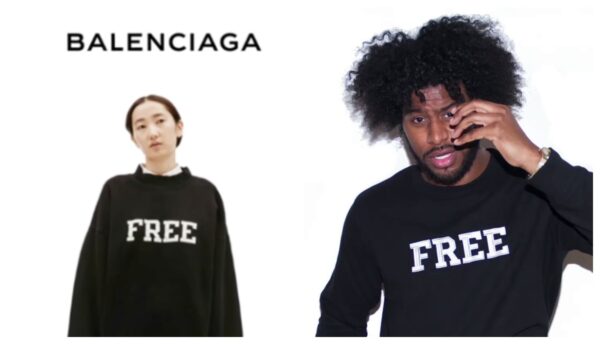Fashion designer Lamont Stapleton has recently accused Balenciaga of “borrowing” his design. The designer wore an original crewneck he made in 2019 to a party in Los Angeles. Stapleton claimed that a slew of famous fashion elites were present, and during the event, he received compliments and comments about his shirt.

Two years later, Stapleton came across his design on Balenciaga’s site, where it was being sold for around $25,000. Stapleton promptly released a video and photos that showed that he debuted his design in 2019, more than two years before Balenciaga’s 2022 release. In the video, he also expresses that he would appreciate connecting with someone from the high-end brand regarding the situation.
How to Protect Designs and Art
But as small business owners or creatives, how does one protect their designs and art from being duplicated?
For starters, a healthy business practice, in general, is to have nondisclosure agreements, according to Lisa Bonner, a veteran entertainment and intellectual property attorney.
“Your business and marketing plans…include valuable company information: the outline of your plans to grow your business, customer lists, and trade secrets—all highly confidential information you need to protect,” she explains in her book “Legalities of Entrepreneurship.”
“In order to make sure the information and plans you share are kept private and used as intended, you want to ensure that the people with whom you are sharing are keeping your business confidential,” Bonner continued. “You can do this with an NDA, also known as a nondisclosure or confidentiality agreement, which is an agreement drafted to protect the disclosure’s proprietary information against unauthorized use and disclosure by the receiving party.”
It’s also important to trademark your work, whether that be the logo on your line or the product name. This allows you to take legal action against infringement and place the ® symbol next to your designs. It also serves as a warning to copycats by letting them know your work is trademarked.
And if your portfolio is online, be sure to watermark your design, so it’s harder to duplicate it. Patents are also an excellent way to protect an invention or how something you’ve created operates. Fashion and art aren’t necessarily in this category, but that doesn’t mean that there may be aspects of your designs that a patent could protect.
Besides trusting yourself, Bonner encourages budding business owners to work with people they can trust as well. This includes manufacturers who will work with your designs.
Onboarding legal support like lawyers is also a great way to bolster your business against issues like Stapleton’s.
“Your lawyer will be your first line of offense and defense, so you most certainly want to hire a lawyer very early in your process,” Bonner tells Finurah. “When looking for an attorney, ask for referrals from people you trust. Gather questions related to your needs and be prepared to ask the proposed attorney questions about their practice, what types of transactions [or cases, in the instance of litigators] they’ve handled, how long they’ve been in practice, how they work, and what their general response time is. Also, you may want to ask about her network. You’ll want to make sure she has good working relationships with other attorneys outside of her field of expertise whom she can refer you to when the need arises.”




